Analysis of VOC and SVOC emissions in vehicle interiors

Materials analyzed according to VDA 278 with thermodesorption
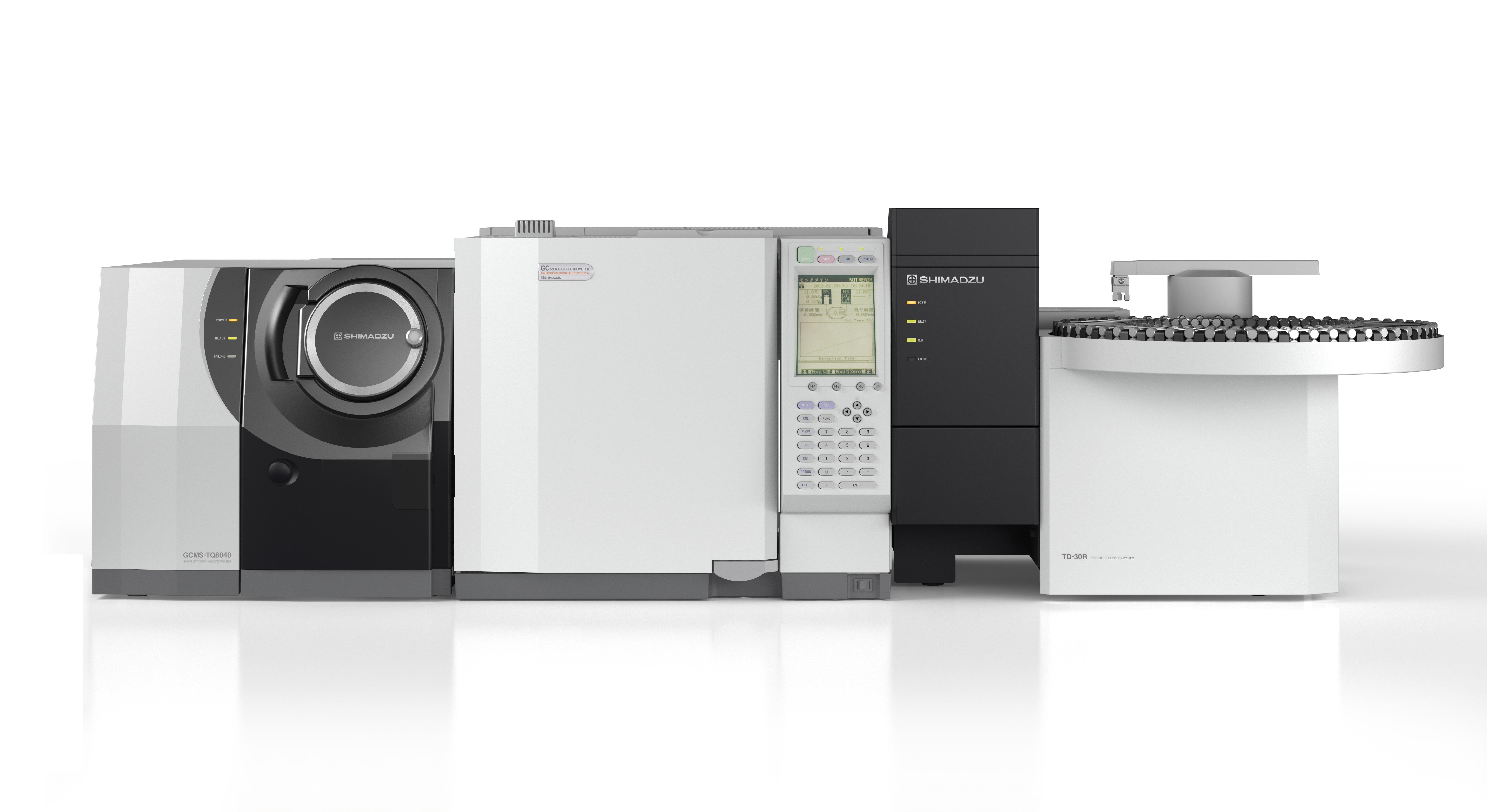 GCMS-System with TD-30R Thermal Desorption System
GCMS-System with TD-30R Thermal Desorption System
In recent years, measures to reduce the use of organic components in the automotive industry have made remarkable progress. In Germany, specialized VDA 278 regulations for volatile organic compounds (VOC) and semi-volatile organic compounds (SVOC) have been defined for non-metallic automotive materials. Automobile manufacturers use the VDA 278 regulations for molded parts in the passenger compartment; they allow estimation of the effects of emissions while improving products.
New cars should smell as neutral as possible, but large-area odor carriers such as carpets, headliners or seat covers influence customers’ perception. Odors in the car interior should not be annoying or even harmful, but should ideally contribute to the purchase decision.
For analysis, samples are extracted thermally using thermodesorption analysis (TD), separated in GC and detected in a mass spectrometer. The samples are transferred to the TD tube and then introduced into the GCMS through defined desorption programs. This allows for a convenient and rapid analysis of VOC and SVOC. Since some of the desorbed organic components are semi-volatile compounds, the analysis system used needs to adhere to important quality requirements to prevent the possible “carryover” of sample components between measurements.
TD-30: All requirements of VDA 278 are met and exceeded
Shimadzu has introduced a new solution for gas and material analysis. Its flexible extensibility supports a wide range of quantitative analyses, for example in research or quality control. The new TD-30 desorption system offers several features, e.g. particularly inert lines, shortest possible connections between GCMS and TD, and fast heating and cooling of the TD tubes. A built-in overlap function significantly increases sample throughput. The TD-30 thus fulfills and even exceeds all requirements of the VDA 278 regulation.
According to VDA 278, the samples (rubber, plastic, leather) are cut into thin strips and approximately 30 mg of each sample is placed in the TD tube. The tube is provided with about 5 mg of glass wool on either side and sealed with lids. VOC and SVOC components are desorbed at different temperatures for 30 min each, and fractions collected are then introduced into the GCMS. Analysis conditions are summarized in table 1.
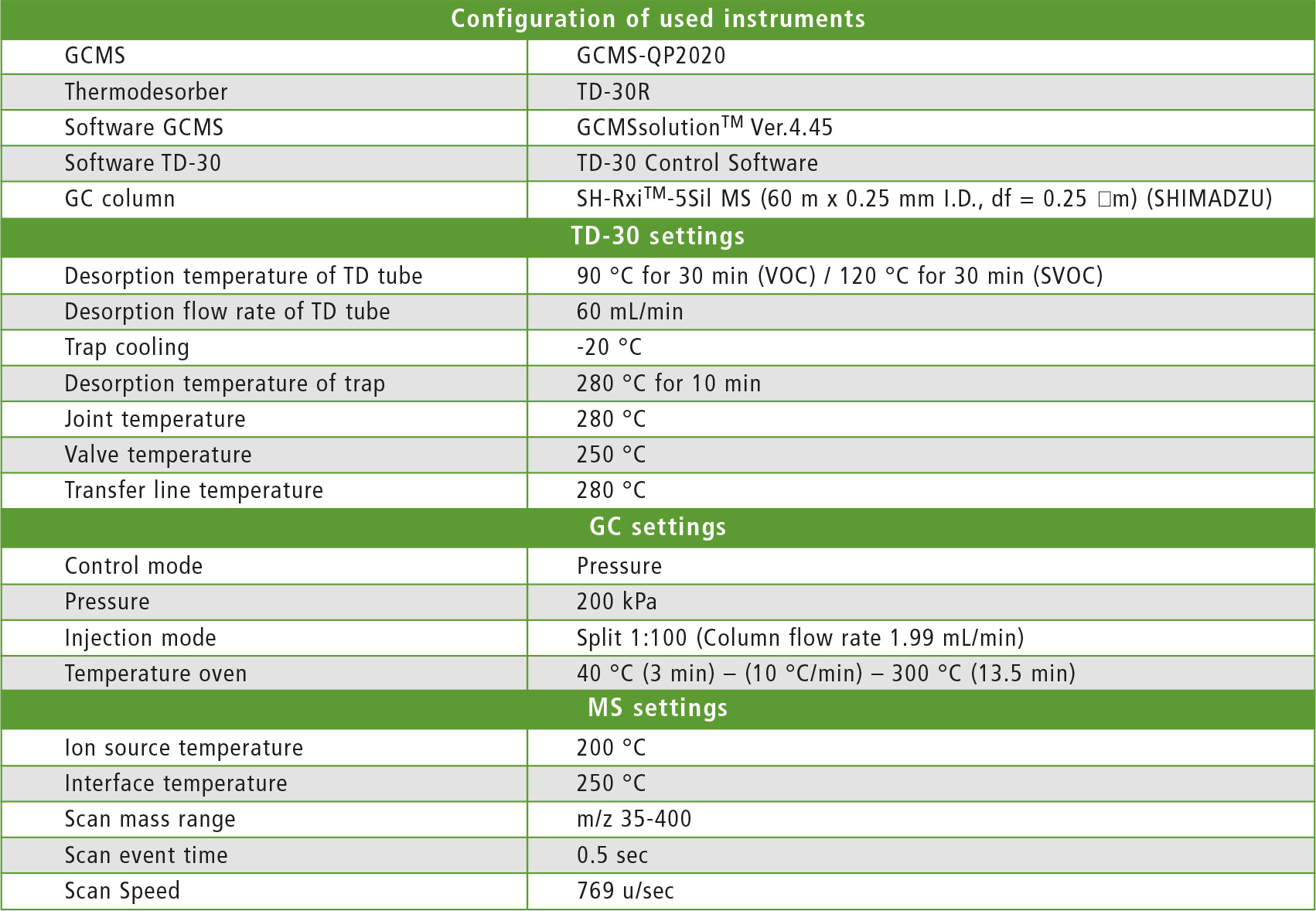 Table 1: Configuration of used instruments
Table 1: Configuration of used instruments
Results: Evaluation of calibration and recovery rates
Standards for the calibration curves are prepared by diluting toluene and n-hexadecane with methanol to 0.5 µg/µL. 4 µL of the solution are then added to the Tenax® TA tube and measured with GCMS to determine the response factor (Rf). The Rf s are later used to quantify the components in the samples. The formula used to calculate Rf is as follows:

Emission of the components examined is calculated as:

In addition, recovery rates of the analysis system are calculated by preparing a mixture of typical VOC components (concentration of about 0.11 µg/µL) and adding 4 µL of the solution to the Tenax TA tube. Calculated recovery rates are summarized in table 2.
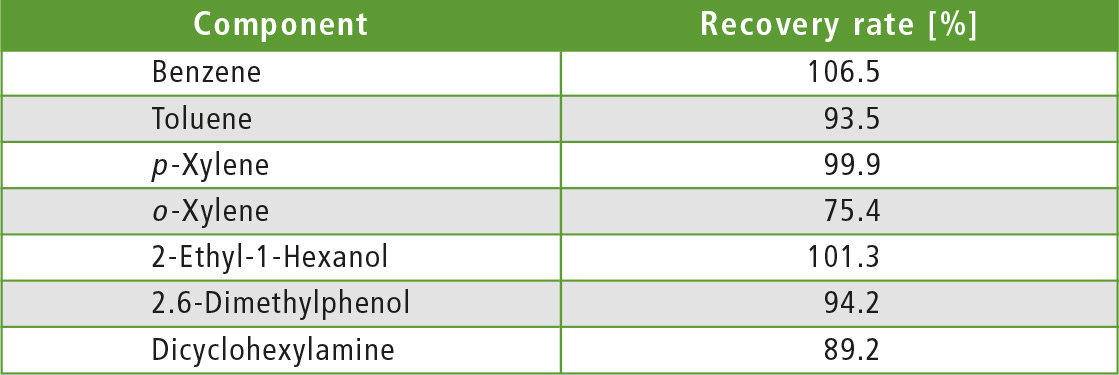 Table 2: Calculated recovery rates
Table 2: Calculated recovery rates
Analysis results for non-metallic automotive materials
Table 3 shows the results of quantitative analysis (in µg/g) for VOC components in rubber, plastic and leather. Among the calculated values from the leather sample is a very high concentration of bis(2-ethylhexyl)phthalate of 333.28 µg/g (table 3 and figure 1), which is used as a softener in plastics.
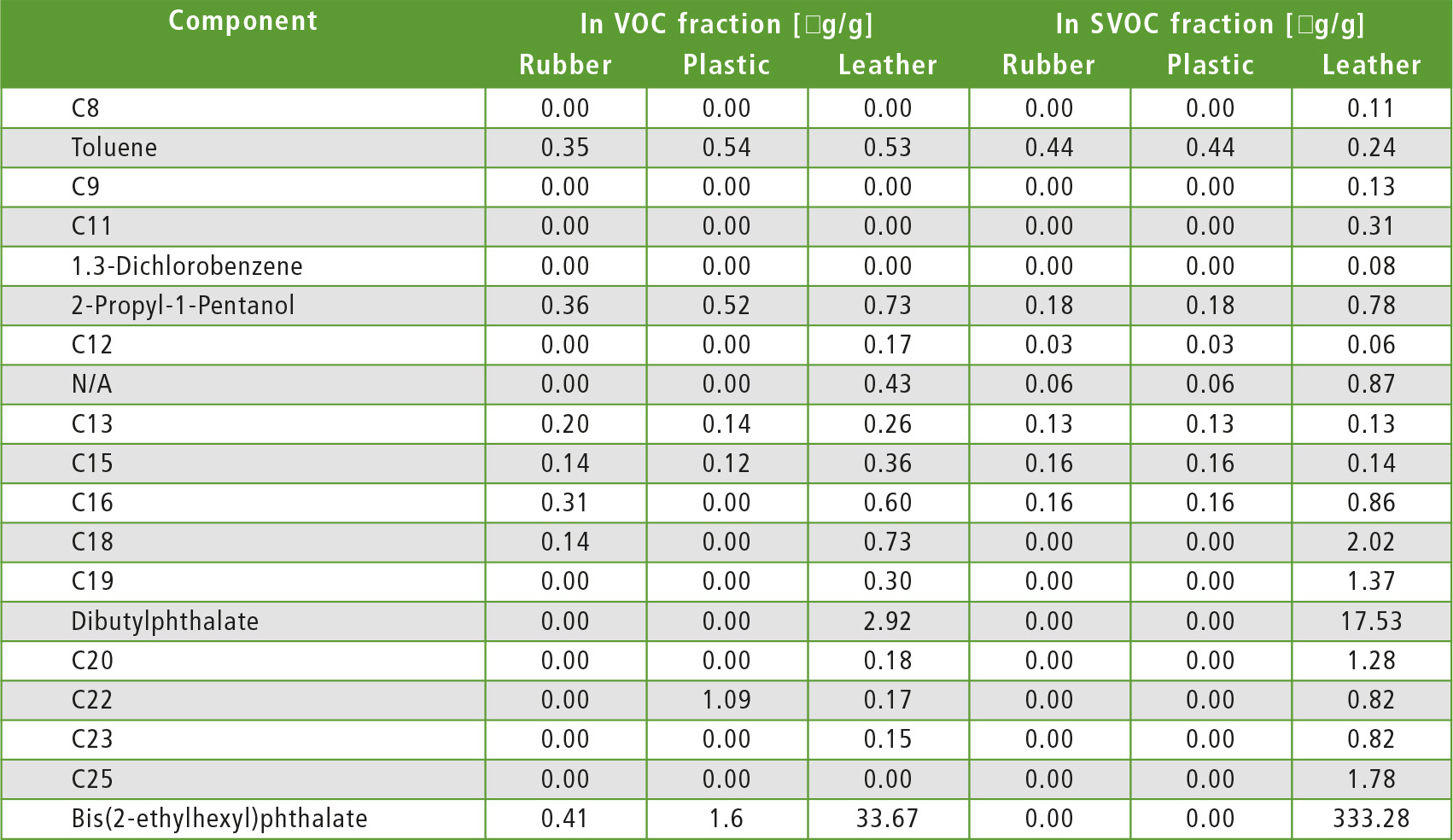 Table 3: Results of the quantitative analysis
Table 3: Results of the quantitative analysis
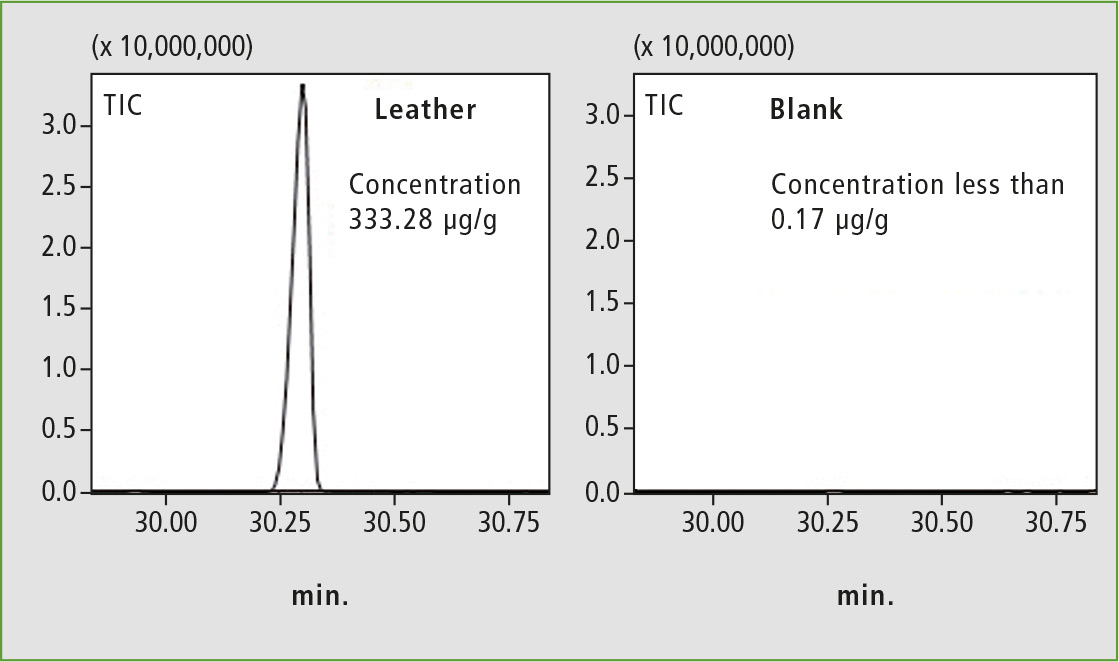 Figure 1: Chromatogram of a leather sample
Figure 1: Chromatogram of a leather sample
Directly after this sample measurement, an empty TD tube was tested to determine the possible carry-over of analytes into the subsequent measurement. After this measurement, a value of 0.17 µg/g bis(2-ethylhexyl)phthalate was calculated, representing only 0.05 % of the concentration of the previous measurement (figure 1). The high quality of the system and its suitability for complex samples of the VDA 278 standard was therefore proven.
Conclusion
The TD-30 is a revolution in the market of thermal desorption systems. The TD-30R high-end model in particular sets new standards in this area. This system offers the highest sample capacity (120) on the market. Additionally, horizontal alignment of the TD tubes ensures analysis without carry-over.
An overlap function increases sample throughput. The unique design of the transfer connection – without cold spots and with the shortest path between TD and GCMS – enables highly sensitive analyses over a very wide temperature range.
Further information on this article
Thermal Desorption Sysstem – TD-30 Series